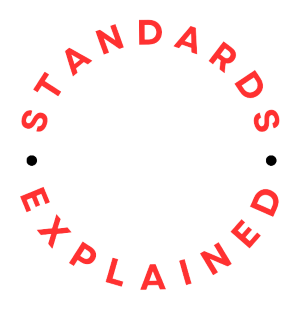ISO 30301:2019 Information and documentation — Management systems for records — Requirements specifies requirements for a management system for records (MSR) in order to support an organization in the achievement of its mandate, mission, strategy, and goals. It addresses the development and implementation of a records policy and objectives and gives guidance on measuring and monitoring performance. An MSR can be established by an organization or across several organizations that share business activities.
The standard is applicable to any organization that wishes to:
- establish, implement, maintain and improve an MSR to support its business;
- ensure itself of conformity with its stated records policy;
- demonstrate conformity with the standard’s requirements.
What does it cover?
| Introduction |
| 1 Scope |
| 2 Normative references |
| 3 Terms and definitions |
| 4 Context of the organization |
| 4.1 Understanding the organization and its context |
| 4.2 Understanding the needs and expectations of interested parties |
| 4.3 Determining the scope of the MSR |
| 4.4 Management system for records |
| 5 Leadership |
| 5.1 Leadership and commitment |
| 5.2 Policy |
| 5.3 Organization roles, responsibilities and authorities |
| 6 Planning |
| 6.1 Actions to address risks and opportunities |
| 6.2 Records objectives and planning to achieve them |
| 7 Support |
| 7.1 Resources |
| 7.2 Competence |
| 7.3 Awareness |
| 7.4 Communication |
| 7.5 Documented information |
| 8 Operation |
| 8.1 Operational planning and control |
| 8.2 Determining records to be created |
| 8.3 Designing and implementing records processes, controls and systems |
| 9 Performance evaluation |
| 9.1 Monitoring, measurement, analysis and evaluation |
| 9.2 Internal audit |
| 9.3 Management review |
| 10 Improvement |
| 10.1 Nonconformity and corrective actions |
| 10.2 Continual improvement |
| Annex A Operational requirements for records processes, control and systems |
Implementation
Implementing a management system for records in conformity with ISO 30301 involves several key steps.
Leadership and Commitment
- Demonstrate leadership commitment to records management within the organization.
- Establish a records management policy that aligns with organizational goals.
Scope and Context
- Determine the scope of the records management system.
- Understand the internal and external context, including legal and regulatory requirements related to records management.
Legal and Regulatory Compliance
- Identify and comply with relevant legal and regulatory requirements for records management.
- Stay informed about changes in legislation that may impact recordkeeping.
Records Management Policy
Develop a records management policy that outlines the organization’s commitment to effective and efficient recordkeeping.
Risk Assessment
- Identify and assess risks associated with records management.
- Determine the necessary controls to mitigate risks and ensure the integrity and authenticity of records.
Records Inventory
- Conduct a comprehensive inventory of all records within the organization.
- Categorize records based on their importance, retention periods, and disposal requirements.
Records Classification and Indexing
- Establish a records classification system that organizes records based on their content and purpose.
- Develop an indexing system to facilitate easy retrieval and access to records.
Retention and Disposal Policies
- Develop and implement retention policies specifying how long records should be retained.
- Establish procedures for the secure and timely disposal of records that have reached the end of their retention period.
Access Controls and Security
- Implement access controls to ensure that only authorized personnel have access to specific records.
- Establish security measures to protect records from unauthorized access, alteration, or destruction.
Training and Awareness
- Provide training to employees on records management policies, procedures, and best practices.
- Raise awareness about the importance of records management across the organization.
Technology and Systems
- Implement technology solutions and systems to support efficient records management.
- Ensure that systems enable secure storage, retrieval, and tracking of records.
Audit and Monitoring
- Conduct regular internal audits to assess compliance with records management policies and procedures.
- Monitor the effectiveness of the records management system and make improvements as needed.
Continual Improvement
- Establish processes for continuous improvement of the records management system.
- Regularly review and update records management practices based on feedback and changing requirements.
Integration with Other Management Systems
Integrate records management with other relevant management systems, such as quality management or information security management.
Documentation and Record-Keeping
- Develop and maintain documentation related to records management policies, procedures, and practices.
- Keep records of audits, training, and any changes made to the records management system.
External Communication
- Communicate records management policies and practices to external stakeholders when necessary.
- Ensure transparency and compliance with external requirements.
Legal and Ethical Considerations
- Ensure that records management practices align with legal, ethical, and professional standards.
- Establish processes to handle records related to legal and regulatory compliance.
In conclusion…
By following these steps, organizations can implement a records management system in conformity with ISO 30301. Regular reviews and updates are essential to ensure the continued effectiveness and relevance of the records management practices.
ISO 30301 can be purchased through the ISO.org website.














Comments (0)